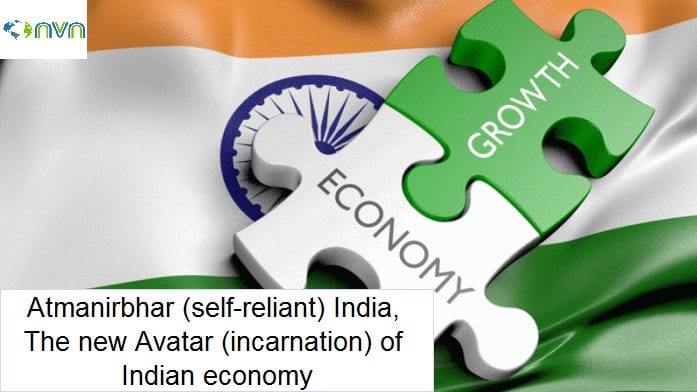Economy
Atmanirbhar (self-reliant) India, The new Avatar (incarnation) of Indian economy

The COVID-19 has clasped the momentum of Indian economy which it had taken three decades to set off since 1991 reforms. Time has come for to reset and reboot it in every plausible manner. Undoubtedly Government has woke up to the crisis by a slew of stimulus measures to bail out the nation out of the tough and torrid time. While in last two economic encouragements meant for catering support to strengthen the frail economy but the latest or the third one was a clarion call by our Honorable Prime Minister for self–reliance. Before delving into that let’s have an analytical dissection of the economic package 3.0.
The returnee labor has twin necessities, one is life and the second is livelihood. Looking at this, apart from earlier announcements another additional monthly 5 kg rice or wheat and 1 kg pulses are to be supplemented in the coming two months. The most important part is that this can be availed with or without ration cards. This is an extension of Government dream policy for one nation one ration card by end of 2021.
Similarly for salaried workers and taxpayers, some relief was provided in the form of an extended deadline for income tax returns for financial year 2019-20, with the due date now pushed to November 30, 2020. The rates of tax deduction at source (TDS) and tax collection at source (TCS) have been cut by 25% for the next year, while statutory provident fund (PF) payments have been reduced from 12% to 10% for both employers and employees for the next three months.
Apart from MSMEs, other stressed business sectors which got attention were non-banking finance companies (NBFCs), power distribution companies, contractors and the real estate industry.
This is the first tranche of the Atmanirbhar Bharat Abhiyan announced by the Prime Minister Narendra Modi on Tuesday as a ₹20 lakh crore economic package. That package includes the ongoing Pradhan Mantri Garib Kalyan Yojana, meant to support the poorest and the most vulnerable communities during the pandemic, as well as several measures taken by the Reserve Bank of India to improve the liquidity. More tranches are expected in the next few days. Ms. Sitharaman side-stepped queries on the actual cash outgo for the government, as well as how the Center intends to raise the needed funds.
Employee Provident Fund (EPF) support, provided to low-income organised workers in small units under the PMGKY is being extended for another three months and is expected to provide liquidity relief of ₹2,500 crore. Mandatory EPF contributions are also being reduced from 12% to 10% for both employees and employers in all other establishments.
NBFCs, housing finance companies and microfinance institutions — many of which serve the MSME sector — will be supported through a ₹30,000 crore investment scheme fully guaranteed by the Center, and an expanded partial credit guarantee scheme worth ₹45,000 crore, of which the first 20% of losses will be shouldered by the Center.
Power distribution companies, which are facing an unprecedented cash flow crisis, will receive a ₹90,000 crore liquidity introduction. Contractors will get a six month extension from all Central agencies, and also get partial bank guarantees to ease their cash flows.
After vividly discussing the financial package it is apparent that time has come for another Swadeshi movement in the post independence era. The announcement made over the last two days is one of the most important steps we are taking since independence. In past also during Mrs Indira Gandhi regime when India was marred by poverty , hunger and malnutrition, without relying upon the global forces, had set the trend for self reliant agriculture in the form of green revolution. Time has come for another self sufficient movement which will facilitate industrial resurgence, welcoming foreign manufacturers and technology into India, and generating world class products in India for domestic consumption as well as for export.
A sure, stronger, steady and unsurprising India is necessary for active engagement in the global supply chain. This is a long term strategy we are harnessing but we must not peek for easy way outs in the short term, but aim to be in a better and financially stronger place in the long term. Revival of entrepreneurship and required regulatory alters will result in a radically transformed India in 10 years from now.

































